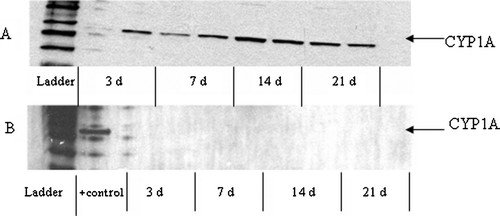Figures & data
FIG. 1 Kidney (A) and spleen (B) cell numbers from bluegill exposed to vehicle ▪, 5.0 ▪ or 50.0 □ μg PCB 153/g BW, or to 0.01 ▪ or 1.0 □ μg PCB 126/g BW at 1 (n = 7–14), 3 (n = 3–6), 7 (n = 3–9), 14 (n = 3–6) or 21 (n = 3–5) d post-injection. Each bar represents the mean ± SE. aSignificantly different (p < 0.05) from the time-matched vehicle control.
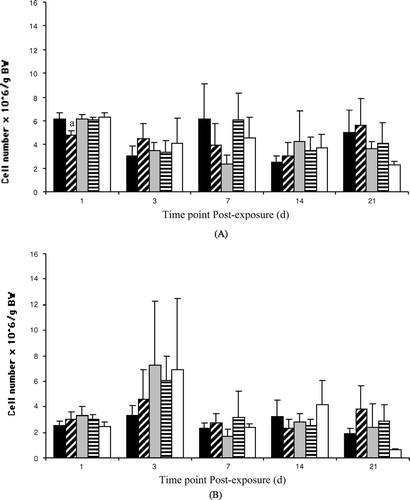
FIG. 2 Extracellular superoxide (O2. −) production by bluegill kidney phagocytes following exposure to vehicle ▪, 5.0 ▪ or 50.0 □ μg PCB 153/g BW, or to 0.01 □ or 1.0 □ μg PCB 126/g BW at 1 (n = 7–14), 3 (n = 5–8), 7 (n = 3), 14 (n = 5) or 21 (n = 3–5) d post-injection. Each bar represents the mean ± SE. aSignificantly different (p < 0.05) from the time-matched vehicle control.
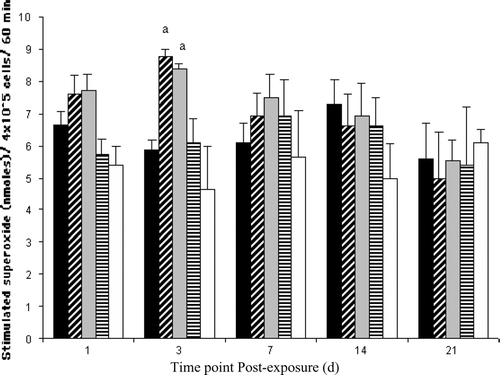
FIG. 3 ConA (A)- and LPS (B)-stimulated lymphocyte proliferation following exposure of bluegill to vehicle ▪, 5.0 ▪ or 50.0 □ μg PCB 153/g BW, or to 0.01 □ or 1.0 □ μg PCB 126/g BW at 1 (n = 3–13), 3 (n = 4–6), 7 (n = 3–5), 14 (n = 5–8) or 21 (n = 3–7) d post-injection. Each bar represents the mean ± SE. aSignificantly different (p < 0.05) from the time-matched vehicle control.
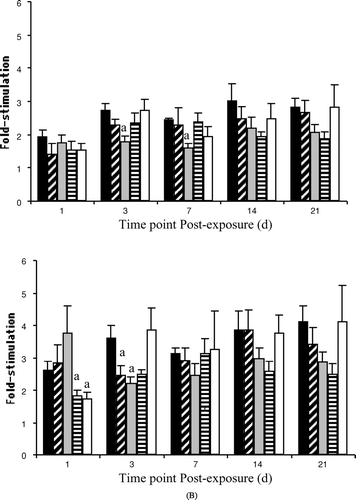
FIG. 4 Hepatic CYP1A protein induction measured by ELISA in bluegill exposed to vehicle, PCB153 or PCB 126 at 1 ▪, 3 ▪, 7 □, 14 □ or 21 □ d post-injection. Each bar represents the mean (n = 3–5 individual liver samples/group) ± SE. aSignificantly different (p < 0.05) from all other time-matched treatment groups including control. bSignificantly different (p < 0.05) from the 14 d PCB 126 group exposed to 1.0 μg/g BW.
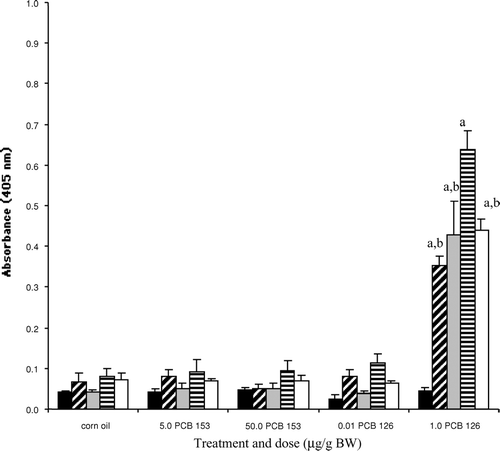
FIG. 5 Hepatic CYP1A protein induction measured by Western Blot in bluegill exposed to 1.0 μg PCB 126/g BW (A) or 50.0 μg PCB 153/g BW (B). Individual liver samples were performed in duplicate per post-injection time point. In , a liver sample taken from bluegill injected with 1.0 μg PCB 126/g BW and sacrificed at 14 d served as the “positive control.”
